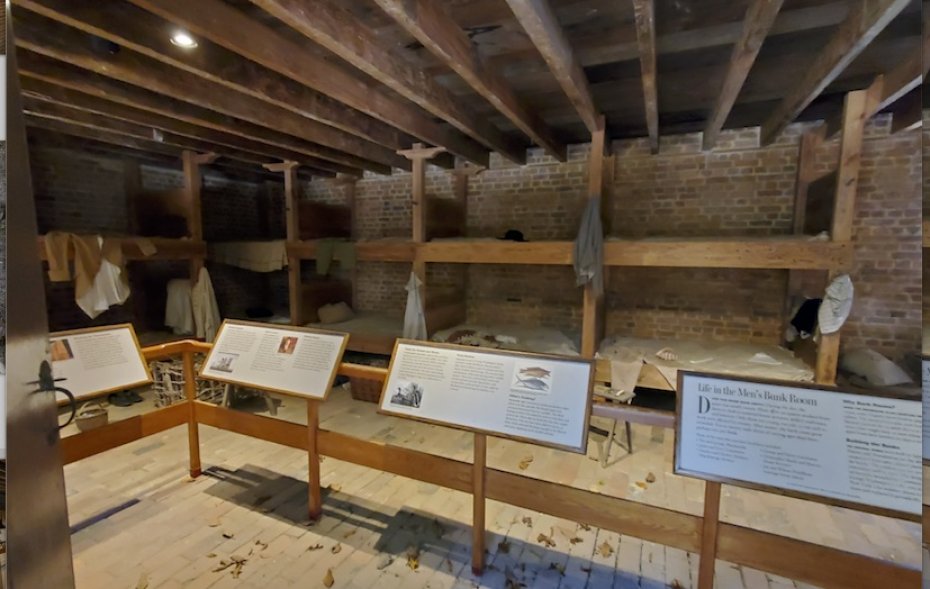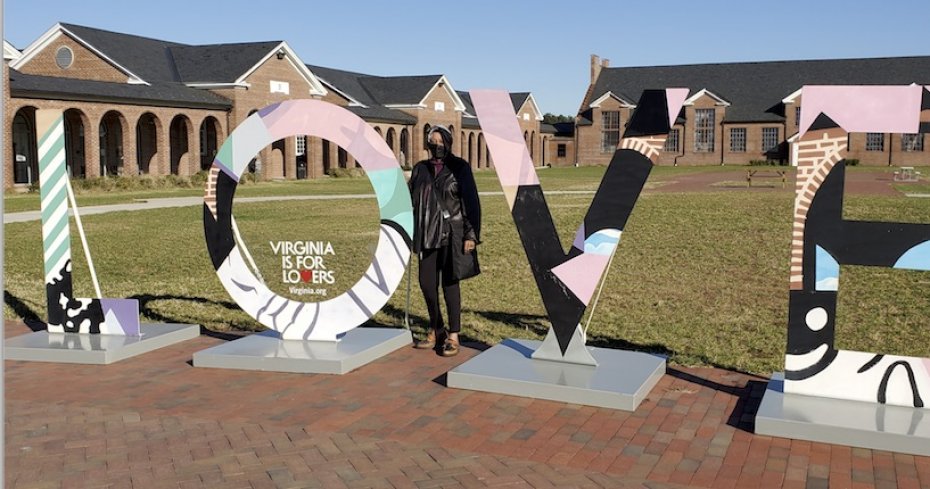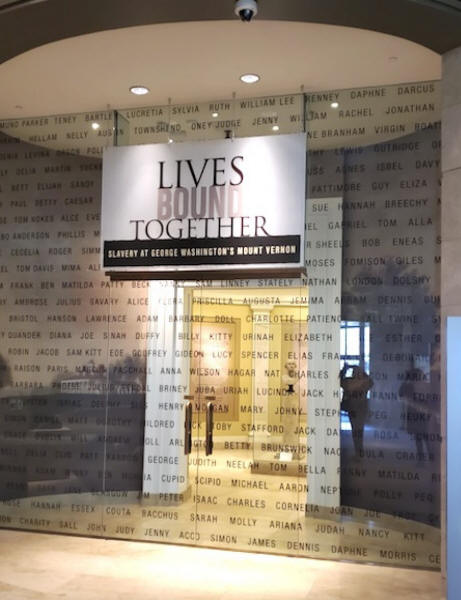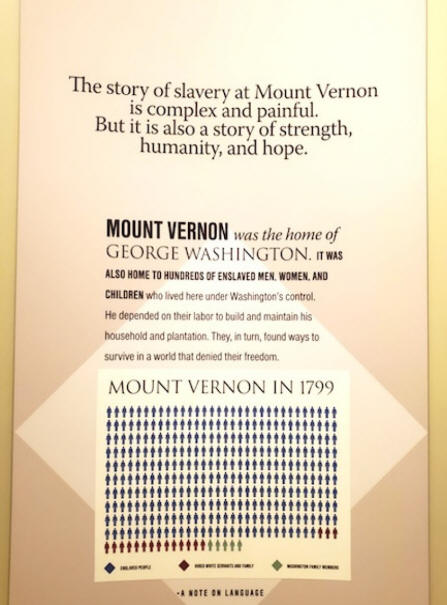
Published 1-23-2021
When the first Europeans arrived the region of Fairfax
County in 1608 the land had been inhabited for thousands
of years by Indians. The Doeg, the largest tribe in the
area, lived in three villages in what is now
Fairfax. They farmed and fished. By the end of the 1600s
they had either migrated, died of disease
or war. @VisitFairfax

In 1649 Charles II of England was exiled but awarded 7
loyalists land in Virginia. The Fairfax family came into
the land by 1690 and in 1745 their ownership of
5,282,000-acres was officially recognized. Fairfax
County was created in 1742 and thrived
on raising tobacco with the extensive use of black
slave labor. By 1749 slaves made up 28% of the
population and in only 33-years the percentage rose to
41%.

The county was named in honor of Thomas the 6th Lord of
Fairfax. He moved from England to VA in 1742 and hired a
teenaged George Washington to survey his land.
Washington moved to Mount Vernon to live with his
half-brother. Fairfax became a slave trader and owned 30
plantations, scattered throughout 9,000-acres, with
hundreds of enslaved workers.

The 1759 Gunston Hall became the home of George Mason,
Founding Father, delegate to the Constitutional
Convention, writer of the Virginia Constitution and the
VA Declaration of Rights and one of the 3 men to refuse
to sign the Constitution because of its failure to
protect individual rights. Ironically, Mason vocally
expounded upon the evils of slavery but held the
2nd largest number of enslaved workers in Northern
Virginia and mentioned 36 slaves in his will but failed
to free any.

An 11-minute orientation film and museum are inside the
Visitor’s Center. “Revolutionary Rights” exhibit
interprets Mason’s influence. “A Woman’s Place” explores
the lives of Gunston Hall’s free and enslaved females.
Exterior tours of the 1700s Riverside
Garden restoration and dependencies are offered as well
as guided tours of the Georgian mansion that showcase
the phenomenal interior designs featuring chinoiserie,
high Palladian and French rococo
architecture. gunstonhall.org


 |
 |
George Washington rented Mount Vernon in 1754 upon the
death of his brother Lawrence and inherited the estate
in 1761 upon the death of Lawrence’s wife.
Ultimately he expanded the mansion, adding a floor to
the 1 1/2 –story structure, with 21-rooms and an 11,028
square footprint. The plantation was divided into 4
agricultural farms and Mansion Farm that included the
area immediately surrounding the house.

Mount Vernon is the most visited historic home in
America and tours of the first floor are
offered. Highlights of the tour are personal items,
furnishings, portraits and the key to the Bastille
gifted to Washington by
Lafayette. https://virtualtour.mountvernon.org
 |
 |


In 1761 2,000 slaves worked at Mount Vernon.
At Washington’s death there were almost 8,000, 316 which
he owned personally. Brick slave quarters were added in
1793 for Mansion House enslaved. Each had a fireplace
and glazed windows. Self-guided tours reveal how these,
largely skilled, enslaved lived. A Cemetery Slave
Memorial is also on the grounds as Washington’s Tomb.



Prior to the tour you should visit The Museum and
Education Center. The 23 galleries and
theaters present interactive exhibits, films, artifacts
and original objects including a set of Washington’s
famous dentures. Current special exhibits include
“Be Washington”, the 4-D Revolutionary War Theater and
"Lives Bound Together", an interpretation of the
institution of slavery, the life of Mount Vernon’s
enslaved and Washington’s views on slavery.
#mountvernon
 |
 |
When Mount Vernon opened for tours in 1858 travelers
were served refreshments because the estate was so far
from any other dining facilities. Today the
adjacent Mount Vernon Inn serves excellent Colonial
American fare with an 18th-century vibe. The do not miss
dish here is peanut soup.

George Washington owned a Distillery & Gristmill. A
white farmer and several enslaved males operated the
3-story, 1771, mill. It is reconstructed to the era and
fully functional.
 |
 |
The reconstructed distillery was the largest in the
nation. In 1799 six enslaved workers and a farmer
produced 11,000-gallons of whiskey. It is the only
18th-century distillery in the country and is the start
of the official American Whiskey Trail. The Signature
Rye Whiskey can only be produced and purchased at Mount
Vernon and is the Official State Spirit of the
Commonwealth of Virginia. Tours of both structures,
3-miles from Mount Vernon, are available.



The 2,000-acre Woodlawn Estate was a wedding gift from
George Washington to his step-granddaughter and
nephew. In 1805 slaves used hand-fired 24” thick
bricks to construct the Georgian/Federal,
5-part mansion, an architectural wonder. The family
owned 90-100 slaves.

James Mason, a Baptist abolitionist, purchased the
property in 1853 and it became a hub of abolitionism,
Quaker, education and scientific farming technique
activities. During the Civil War both sides distrusted
the Quakers and harassed and imprisoned them. An armed,
interracial, civilian militia was established to protect
them, unique for the region and the era.


 |
 |
Frank Lloyd
Wright’s Unisonian-style Pope-Leighey House is the only
Wright house in the region. It was commissioned in 1939
as a home that the middle class could afford. The
1,200-sq. ft., L-shaped, house cost $7,000 and has 2
bedrooms and one bath. The structure was built using
only brick, concrete, cypress and glass. Wright also
designed the furniture and incorporated such features as
radiant heat, high ceilings and an open floor plan. The
house was moved to this site in 1965. Tours are by
reservation. woodlawnpopeleighey.org

West Ford’s mother Venus was a slave. She told people,
including George Washington’s sister-in-law, that West
(1784-1863) was George’s son and his sister-in-law saw
to it that he was educated and freed at the age of
21. He became manager of Mount Vernon upon George’s
death. He served as Washington’s first tomb guard, a job
held by his family for years. He inherited 160-acres
from Bushrod Washington and in 1833 he purchased
214-acres and established Gum Springs 2-miles from Mount
Vernon. It was a place for freed blacks and freedom
seekers to start a life and gain economic stability. It
remains one of the oldest African American communities
in the country and nearly 500 residents are descendants
of the first occupants.
The Mount Vernon Ladies Association purchased Mount
Vernon and 200-acres for $200,000 in 1858 to preserve
and restore it. They used Ford’s recollections as the
basis of the reconstruction. Eventually they moved him
to Mount Vernon and cared for him until his death. It is
believed he is interred in the family tomb.

Gum Springs Museum & Cultural Center has exhibits
curated by Ron Chase that interpret the experiences and
history of Gum Springs. Mr. Chase, a descendant, makes
the stories come alive. gumspringsmuseum.blogspot.com

All of the sites adhere to strict health guidelines.
Call for hours and information and ease your way back
into travel.
Renee Gordon has written a weekly travel column for
the Philadelphia Sun Newspaper for the past fifteen
years and has published articles on local, national and
international travel in numerous publications. Her
columns focus on cultural, historic and heritage tourism
and her areas of specialization are sites and
attractions related to African American and African
Diaspora history. Renee has been a guest radio
commentator on various aspects of tourism and appeared
in a documentary, "The Red Summer of 1919". As an
educator for thirty years she was an English teacher,
event and meeting planner, served as an educational
consultant and intern-teacher mentor. She contributed to
textbooks on women's history and classroom management
and has facilitated workshops on both subjects. Renee
considers herself a "missionary journalist" and as such
she continues to promote heritage and sustainable
tourism.
2013 Recipient of African Diaspora World Tourism
Flame Keeper in Media Award for Travel Writing
Affiliations
IABTW- International Association of Black Travel Writers
PBJ - Progressive Black Journalists
We'd love your comments!
|
Connect with us on:
American Roads and
Global Highways has so many great articles you
may want to search it for your favorite places
or new exciting destinations.

|










































